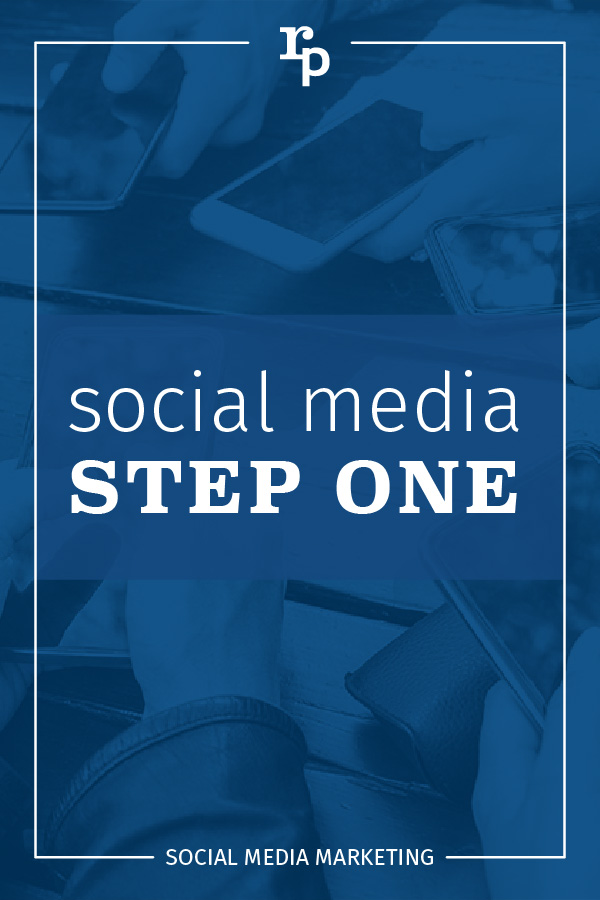Social Media Step One
Editor’s Note on July 14, 2020: While this post was written in 2018, these social media tips still reign true today. Some additional details have been added – the updated notes appear in bold, italic text below.
It’s almost 2019. Surely every business owner knows how to use social media by now, right? While those of us who work in the business take this for granted, it really isn’t true. Many small business owners still struggle with the basics. If that sounds like you, then today’s post is just what you need.
If you’re comfortable with the basics, you might enjoy reading one of our more advanced blog posts on Twitter or Facebook instead.
Here are the five simple steps you need if you’ve managed to avoid social media up until now.
Check Out Your Competition
There’s no reason to completely reinvent the wheel. Your social media step one is looking at your competitors. See what they’re doing and most importantly, are they getting good interaction? Remember, just because they’re posting content doesn’t mean anyone is actually paying attention.
Look for signs of engagement such as shares, comments, and likes. If no one is interacting with the company, find another example to study. Make a list of the kind of content which seems to work and, if applicable, tailor it to your needs.
Pick a Platform
You don’t need to be everywhere. So, pick one platform to start. How do you decide? Think about your target customers and choose a platform based on their interests, not yours. Sure, you may love Pinterest, but if your clients are engineers and chemists, you might be better off building out your LinkedIn profile. Conversely, you may enjoy the rapid-fire interaction of Twitter, but if your customers are middle-aged women, Facebook is where you need to be.
Use this list as a starting point for your decision.
Right now, Facebook has dominated the social media market. The platform has the most monthly active users. Facebook offers a casual environment for all sorts of businesses, including businesses like yours. While it is easier to build a community for a B2C company on Facebook, even B2B companies can have success if they’re willing to showcase the personal, lighter side of their business. In addition to reaching potential clients, it’s a great way to attract your next employee.
YouTube
As the biggest video platform, YouTube is the leading social media marketing tool for businesses that focus on video content. And, behind Google, it is the second-largest search engine. This is where people go when they want to know how to do something. The platform has over 2 billion monthly users!
Instagram was, and still is, an awesome mobile photography brand. It’s great for sharing rich media, such as images and videos. This platform is well suited for food, fashion, and travel industries.
Want to know what’s happening now? Head to Twitter. It’s the best social media platform for sharing the current news. Conferences and events fair well on this platform. It’s also a terrific place to start or join an ongoing conversation about a specific topic.
Business professionals have profiles on LinkedIn. It’s the leading B2B social and professional network. In addition to connecting your business to other professionals, LinkedIn drives traffic to B2B blogs and websites.
Pinterest is a powerhouse. It’s evolved so much from users sharing recipes and renovating tips. This platform is great for B2C businesses such as retail stores, photographers, jewelers, and restaurants. There’s some research that says this is the platform that drives more serious buyers (those willing to spend more money) to shop sites than Facebook does.
Still not sure? Dive into our Starter Kit to pick a platform.
Be Active
Social media is not a broadcast medium. It’s about interaction, so spend time engaging with others and contributing to conversations in a meaningful way. Likes are nice, but comments, replies, and retweets will help you build your online community faster. Ask questions and don’t be afraid to interact with clients online.
If you do have an unhappy customer, don’t try to solve the problem online. Reach out and invite them to contact you directly. And when you have solved the problem, encourage them to go back to social media and let their community know what you’ve done.
Have a Plan
Sometimes social media can feel a little random and chaotic. It shouldn’t be. Start the process by creating a content calendar, plan your posts with a mixture of informative, fun, and direct calls to action. Post your content, measure results, and start again.
looking for more?
Head over to the Digital Toolbox for more social media tips.

Chatbot Basics 101
Let's talk about chatbots. You know, those things you sometimes message on different applications...
Favorite Social Media
What is your favorite social media platform? Remember the days when there was just Myspace? Oh,...
Call to Action Do’s and Don’ts
There is such a thing as a bad call to action The goal of any page on a website, whether it's the...
